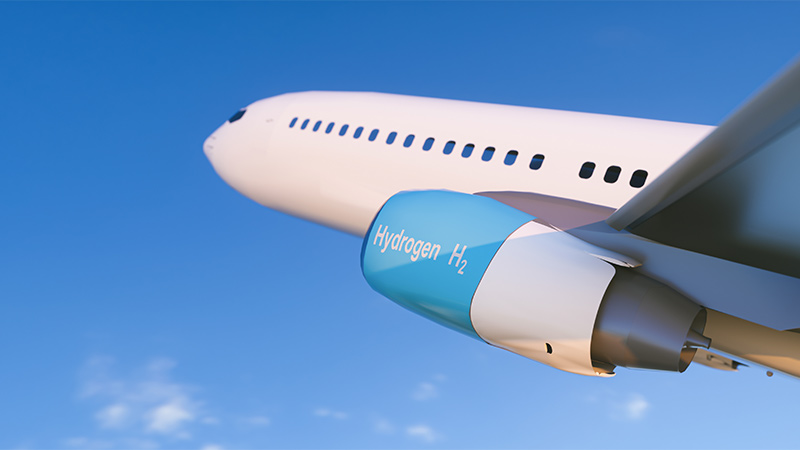

As the world continues to grapple with the issue of climate change, scientists and engineers have been tasked with finding innovative solutions to reduce our carbon footprint.
One such initiative is ‘Project Napkin’, (New Aviation, Propulsion, Knowledge and Innovation Network), formed from a consortium of companies and institutions across the industry. They have investigated the potential of hydrogen as a clean energy source for zero-emissions flights. Uniquely the study has looked at all aspects of the solutions required, with manufacturers and airports teaming with academic institutions to look at the whole lifecycle.
The project has explored using hydrogen with fuel cells or gas turbines to replace conventional aircraft engines powered by fossil fuels. As a result, no emissions are released into the atmosphere; only water vapour is produced. This technology has already been tested on drones and small planes, but if successful, it could be applied to larger commercial aeroplanes.
Hydrogen fuel cells offer several advantages over traditional combustion engines. For one thing, they are much quieter than combustion engines, meaning that aircraft powered by them would be less disruptive for people living near airports or flight paths. Additionally, they can produce more power than combustion engines while being much lighter, making them more efficient and cost-effective for aircraft operators.
Finally, they do not require regular maintenance like other engines; this means that aircraft powered by hydrogen fuel cells could stay in service longer than those powered by traditional combustion engines.
However, several challenges still need to be addressed before hydrogen fuel can become a viable alternative for commercial flight. For instance, the liquid form of hydrogen requires cryogenically insulated tanks to remain stable at -273 degrees Celsius. This challenge presents significant design and access issues for aircraft manufacturers and safety concerns due to the potential for explosive situations. Additionally, the cost of liquid hydrogen relative to fossil fuels is a critical factor determining the uptake of hydrogen-powered flight.
The study found that large investments will need to be made in infrastructure to transport and distribute the fuel on a large scale. By 2040 it is predicted that we will need 300,000 tonnes of hydrogen per year.
In conclusion, Project Napkin demonstrates that it should be possible to reduce our reliance on fossil fuels and combat climate change through green technologies. Regional flight, powered by hydrogen, could be in place as soon as the end of this decade, and mid-range travel the following decade, promising guilt-free air travel in the future.
Our related articles below talk more about hydrogen fuel and the technological improvements that have occurred in recent years. Click one of them to read on.
